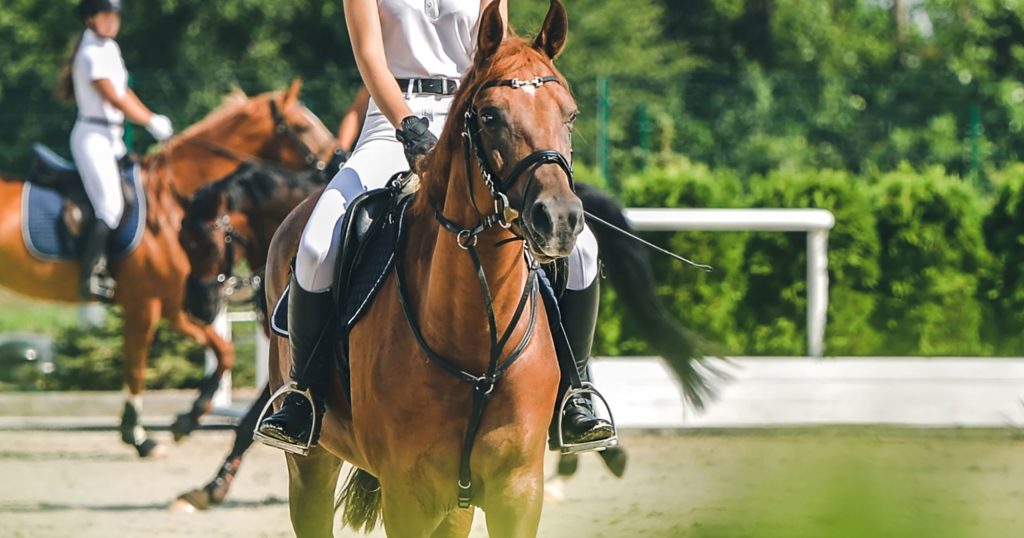How do you make your horse more responsive to the leg ?
In all disciplines, we need our horses to be responsive to the aids and especially to the leg.
A horse that does not react to the leg will not respond properly to what you ask. He won’t understand it. For example, when you ask him to do a transition from trot to canter. Or when you ask him to extent the canter when jumping or in a dressage test. This can therefore make things difficult.
Riding school horses are often not very responsive to the leg because their different riders are not always very precise with their aids and often kick every stride. For a horse to be reactive and not dead to the leg, you need light and precise leg actions.
I personally use spurs, but it depends on the horse. And don’t use any type of spurs. My advice would be to try different kinds of spurs. There are many to choose from: hammer spurs for example. There are also different ways of putting them on: sitting on the spur rest of the riding boot or below for a gentler effect. These are fairly fine adjustments to work on with your horse and your trainer.
When I work on easy schooling exercises, I always make sure that my horse responds. He must always be responsive. I shouldn’t have to carry him with my legs. He needs carry himself forward.
What can I do when my horse doesn’t respond to my legs?
Start asking nicely by applying the top the calf. If you see that he doesn’t react, apply pressure with the lower part of the leg. And then, you can touch him with the spur.
You may need to use your whip right behind your leg or on the shoulder. It’s not meant to be aggressive, it’s just to signal to him that he needs to pay more attention. You have to be gentle; the horse mustn’t panic.
You can also add some voice commands, such as a clicking sound with the tongue or by using your voice. It always works well. And it’s very useful in order to avoid having to kick the horse every stride.
Get your horse moving forward off your leg on ground poles:
A good exercise to make your horse more responsive to the leg consists of using ground poles and doing transitions between them. You can try the following transition for example: canter – trot – canter on fifteen or twenty metres. Try to do as many transitions as possible in this short distance!
Do you have difficulties getting your horse to respond to the leg ? Did you enjoy reading this email ? Answer me as a comment here. See you soon !

